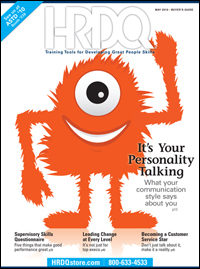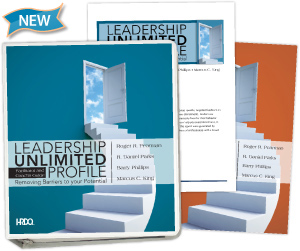|
People Skills
Speaking of friends, this Sunday, August 7th, 2011 is National Friends Day! Send your friends and family a blessing by sharing the movie May You Be Blessed
Affiliate May You Be Blessed movie banner ~
Learn more about Personal Development Click Here SkillBuilders: 50 Communication Skills Activities Communication is the foundation of all human interaction — and the basis of all training programs. From team building and leadership to customer service and supervisory training, communication is a fundamental skill that should be integrated into all types of training.
Uses for SkillBuilders: 50 Communication Skills Activities The exercises are basic enough to include in any training program that incorporates communication skills, including those for customer service, sales training, and supervisory skills. A handy applications matrix matches the activities with 8 important communication topics. Many activities have more than one application: Communication Awareness, Delivering Your Message, Nonverbal Communication, Communication Conflicts, Active Listening, Giving and Receiving Feedback, Written Communication, & Presentation Skills. Formats This activity collection is available as a digital download in Adobe Acrobat PDF or the traditional 3-ring binder version. Both formats are fully reproducible.Click here to visit HRDQ
What’s My Style is a personality style assessment for management development training. Individuals identify personality style, improve their people skills, learn how personality drives behavior and improve interpersonal interactions. What makes people act the way they do? There’s much debate about what drives human behavior. But one thing is certain – research proves that personality plays a major role in how we act when given complete freedom to do so. Understanding personality style is important because it plays a role in all facets of organizational life, from leadership and teams to communication, selling, and time management. What’s My Style is a quick and accurate training tool for identifying personality styles, and it can be used by all individuals, including employees and managers. Based on the well-known personality theories of Marston and Jung, What’s My Style measures an individual’s preference for one or more four basic behavioral styles: Direct, Spirited, Considerate and Systematic. With this knowledge, individuals can better understand their behavior, the behavior of others, improve people skills, and effectively manage interpersonal relationships. Learning Outcomes Pinpoint one of four style preferences. Discover how style affects behavior. Recognize the strengths and weaknesses of each style. Learn how to interact with different styles. Theory and Development If you are familiar with the MBTI or DiSC assessments, you will find that What’s My Style is a practical and easy-to-use alternative. How It Works What’s My Style starts with an 18-item self assessment that takes approximately 10 minutes to complete. Individuals assign a total of 5 points between pairs of adjectives, dividing the points according to how much they believe each adjective describes their behavior. Scoring the assessment reveals a “My Style Profile” and a dominant preference for one or more four personal styles: Direct, Spirited, Considerate, and Systematic.
What to Order
Learning to Listen is an effective communication assessment for management development training that measures listening skills, increases awareness of effective listening behaviors, improves listening skills and promotes active listening for better personal and work performance. Learning to Listen Second Edition Statistics show that people remember only half of what they hear, even moments after they’ve heard it. Surprising? The fact is that although most of us like to think we’re good listeners, almost everyone needs to improve their listening skills. Research shows that when people improve their listening skills, there is an increase in morale, safety, quality, sales, and productivity, as well as a decrease in unnecessary turnover and absenteeism. In addition, employees with effective listening skills are more productive with new technologies, and organizations that listen to clients are rewarded with a competitive advantage. Learning to Listen is a communication assessment that focuses on both the visible and invisible aspects of listening behavior and measures listening skill in 3 dimensions: Staying Focused, Capturing the Message, and Helping the Speaker. The training assessment also provides individuals with their Overall Listening Effectiveness Score. What separates the Learning to Listen assessment from the competition? While other similar communication assessments identify listening style, Learning to Listen measures listening skills. Focusing on concrete behaviors allows participants to immediately take action on their listening strengths and weaknesses and create an action plan for improvement. The result is employees who are better equipped to handle customer complaints, negotiating contracts, manage teams, and more.
The Neurolinguistic Communication Profile is an NLP assessment for management development training. Improves interpersonal skills and identifies a preference for auditory, visual, or kinesthetic sensory channels used to filter and communicate information.
In a very real way, the NCP serves as a guide for reaching rapport quickly with people whose communication “styles” differ from one’s own. It can serve as a game-changing centerpiece for training on topics including management, coaching, teamwork, and sales. Learning Outcomes:
Identify personal communication preference.
Recognize communication preferences of others. Communicate more effectively with others who communicate differently. Discover how to increase productivity and motivation.
Learn how to exchange information more accurately.Gain flexibility in striving to match another person’s communication style. One of the premises for Neurolinguistic Programming is that each of us filters our communication and thinking in systematic and learnable ways. Research shows that this filtering process occurs during sensory intake. Each of us has a preference for taking in information, organizing it in our heads, and communicating information to others around us. This preference is based on the habitual and systematic use of our primary sense organs — literally our eyes, ears, and body.
The Neurolinguistic Communication Profile can be used as a standalone training instrument, or it can be incorporated into a more comprehensive program on communication or leadership. It also makes an effective component in training programs for a variety of topics, including coaching, management, and supervisory skills. The Neurolinguistic Communication Profile starts with a self assessment that takes individuals approximately 20 minutes to complete. Individuals respond to 65 items relating to communication.The result are scores in each of the three dimensions: Preferred Sensory Modality, Preferred Thinking Style, and Preferred Mode of Expression. Combining these results produces an Overall Communication Profile.
Ron Gutman: The hidden power of smiling
Leadership Unlimited Profile
Removing Barriers to Your Potential
Roger R. Pearman, R. Daniel Parks, Barry Phillips, and Marcus C. King
The Leadership Unlimited Profile is a new assessment that helps managers to develop the behaviors that will help to ensure their success. Based on more than 20 years of research, it provides specific, targeted feedback on those behaviors that severely limit effectiveness, including: Organizing Behavior, Relationship Behavior, Learning Initiatives Behavior, Emotional Behavior, Career Management Behavior. The assessment serves as an “early warning” tool by providing quick insights into the critical areas of performance, identifies the skills sets needed to reach the next level, and establishes benchmarks to help people take charge of their development.
Eat That Frog "Eat a live frog first thing in the morning and nothing worse will happen to you the rest of the day." — Mark Twain
Eat That Frog
#1 secret for great relationships... Quotations about People
The total history of almost anyone would shock almost everyone. ~Mignon McLaughlin, The Neurotic's Notebook, 1960
Who is wise? He that learns from everyone. Who is powerful? He that governs his passions. Who is rich? He that is content. Who is that? Nobody. ~Benjamin Franklin
What is the most beautiful in virile men is something feminine; what is most beautiful in feminine women is something masculine. ~Susan Sontag
You never know till you try to reach them how accessible men are; but you must approach each man by the right door. ~Henry Ward Beecher, Proverbs from Plymouth Pulpit, 1887
A fanatic is one who can't change his mind and won't change the subject. ~Winston Churchill
A small man can be just as exhausted as a great man. ~Arthur Miller
The world owes all its onward impulses to men ill at ease. The happy man inevitably confines himself within ancient limits. ~Nathaniel Hawthorne
Those who are quite satisfied sit still and do nothing; those who are not quite satisfied are the sole benefactors of the world. ~Walter Savage Landor
He has all the virtues I dislike and none of the vices I admire. ~Winston Churchill
I don't know that there are haunted houses. I know that there are dark staircases and haunted people. ~Robert Brault, www.robertbrault.com
Some people are so much sunshine to the square inch. ~Walt Whitman
If we had no faults of our own, we would not take so much pleasure in noticing those of others. ~Francois duc de la Rochefoucauld
A hundred men together are the hundredth part of a man. ~Antonio Porchia, Voces, 1943, translated from Spanish by W.S. Merwin
I've met so many people, often the scum of the earth, and found them, you know, quite decent. I am an uncomfortable stranger to moral indignation. ~W. Somerset Maugham
Freaks are the much needed escape from the humdrum. They are poetry. ~Albert Perry
A man never knows how to say goodbye; a woman never knows when to say it. ~Helen Rowland
In general, of course, a stranger who tries to get you into an automobile is anything but noble, and in general a person who quotes great American novelists is anything but treacherous, and in general a man who says you needn't worry about money, or a man who smokes cigarettes, is somewhere in between. ~Lemony Snicket
His voice was as intimate as the rustle of sheets. ~Dorothy Parker
History teaches us that men and nations behave wisely once they have exhausted all other alternatives. ~Abba Eban
Why are there men and women that while they are nigh me the sunlight expands my blood? Why when they leave me do my pennants of joy sink flat and lank? ~Walt Whitman
Improving Interpersonal Relationships Within Teams
|
















